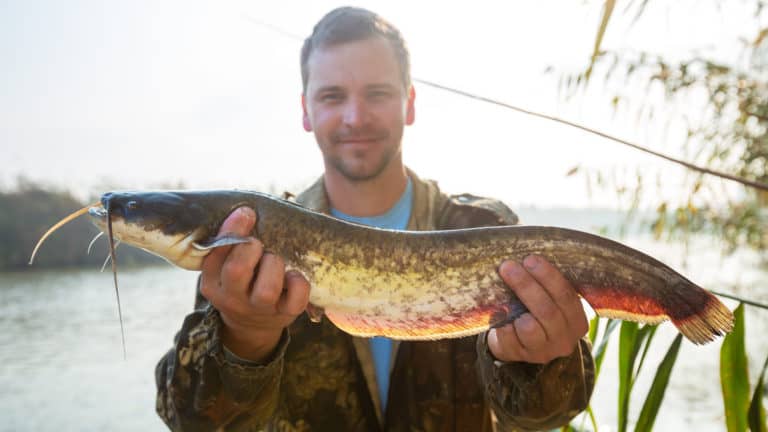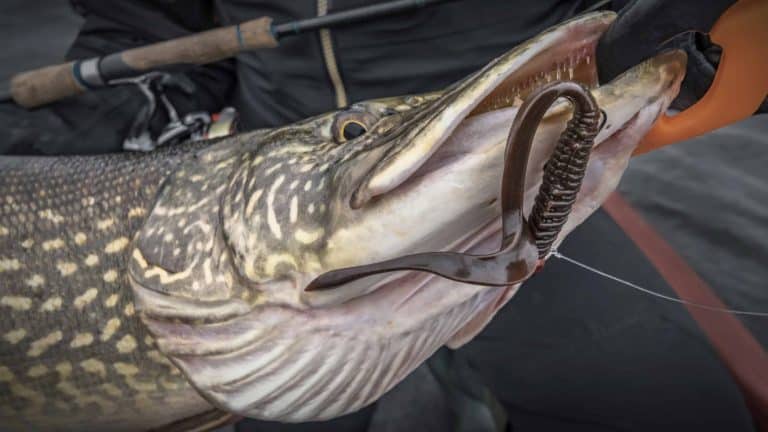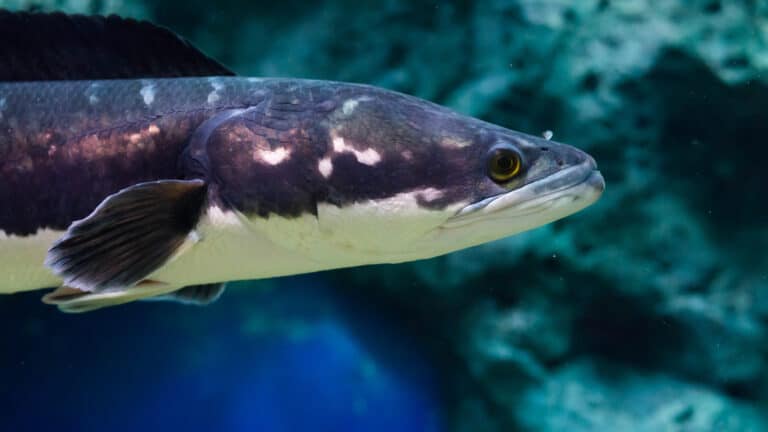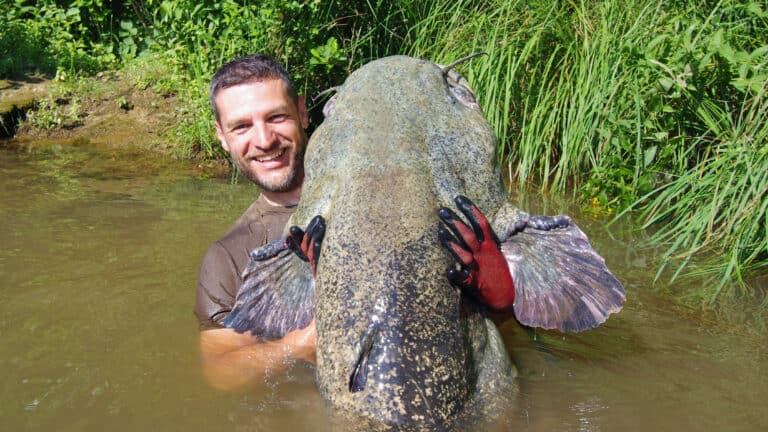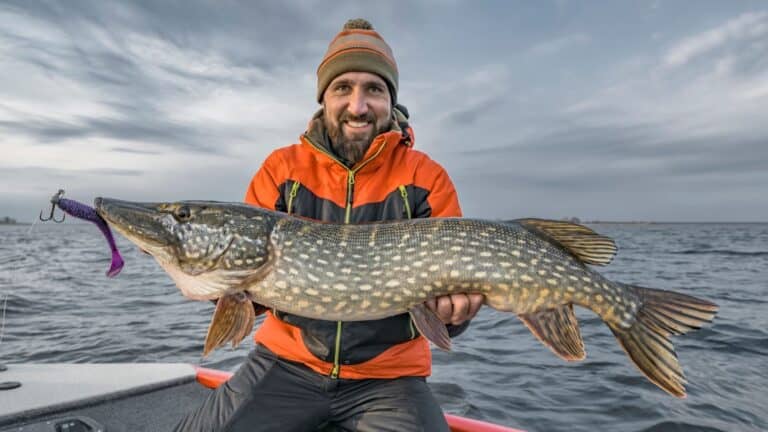How To Catch Pike – A Fisherman’s Guide

Pike are certainly one of the most interesting fish in Europe. They are fearsome-looking creatures with sharp teeth, long tapering bodies, and wide mouths. However, they also have stunning colourations across their bodies and they grow to preposterous sizes. All these features combined make the Pike a very compelling fish to catch, hence why they are so popular among anglers.
The best way to catch Pike is using a lure. This can be anything from a rubber frog to a plastic fish. The idea with lure fishing is to emulate a bait fish in order to trick the Pike into biting the hook. You can then set the hook and reel the fish in. However, for this technique to work effectively, the water needs to be quite clear and the Pike have to be actively feeding. You can also use dead baits for Pike fishing but this style of fishing is much less active.
But I think while a lot of people are aware of Pike, they are perhaps a little intimidated by the thought of catching one. This may be due to their looks, teeth, feeding patterns, & styles, but truthfully, Pike really aren’t that difficult to catch. There are some precautions and considerations you need to take when handling a large predatory fish but otherwise, it’s relatively straightforward.
Table of contents:
- Getting A Fishing License
- Best Time To Go Pike Fishing
- Where To Go Pike Fishing
- What Tackle You Need For Pike Fishing
- Pike Fishing With A Lure
- Best Pike Fishing Lures
- Pike Fishing With Deadbaits
- Best Pike Fishing Baits
- How To Handle & Unhook Pike
Getting A Fishing License
If you’re fishing in the UK, you’ll have to get a fishing license before you are legally allowed to fish for Pike or any other freshwater fish for that matter. The license is free for those under 16 and costs very little for adults as well. You can sign up for a license in five minutes on the gov.uk website. Other countries will have their own regulations and requirements you need to meet for course fishing.
Best Time To Go Pike Fishing
Pike are a fish you can catch all year round. However, you’ll find that September and October are often the most productive months for Pike Fishing. This is because the oxygen level in water increases during this period which increases their metabolisms. Furthermore, a lot of prey fish are feeding actively, thus creating the ideal time for Pike to hunt aggressively. Spring is also an excellent time to go Pike fishing as the ideal temperature for Pike is around 18-21 Degrees Celcius. During Spring, Summer, and Autumn, lures are an excellent way to target Pike. This is a very involving and fun way to catch Pike and in my opinion, its the most rewarding.
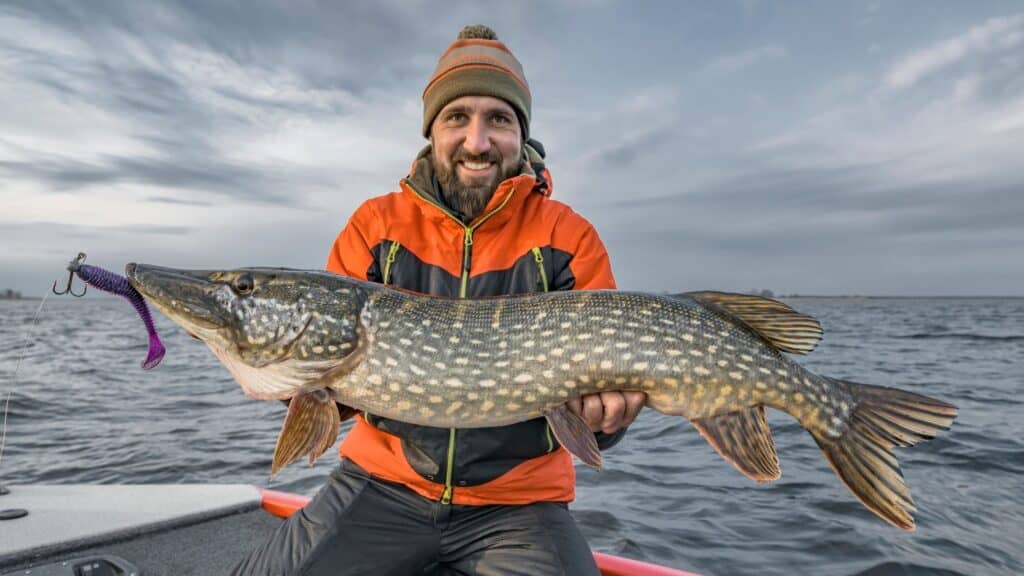
Pike will also be quite active during the summer, especially in places like the United Kindom, where summers don’t get particularly hot. When the water gets warmer, the fish are usually more spread out which makes lure very effective. However, as the water gets colder, all the fish bunch up in the deeper areas of the lakes.
During the winter, Pike’s metabolisms slow down considerably. This means that don’t feed as aggressively but you can still catch Pike during the winter. In fact, Pike are often affiliated with winter fishing, you just need to change strategies slightly. During the winter, I’d opt for dead baits rather than lures. This is a much less active form of fishing and its rather similar to carp fishing in many ways.
Where To Go Pike Fishing
What Tackle You Need For Pike Fishing
You don’t need a whole lot of tackle for Pike fishing. I actually like to keep everything as light as possible when Pike fishing because I tend to change swims quite frequently. However, during the winter, I’ll usually stick to one swim and target the pike using long-range dead bait rods.
What Tackle You Need For Lure Fishing For Pike:
| Tackle | Our Recommendation |
|---|---|
| 8-Foot Lure Fishing Rod | Fox Rage Warrior Pike Cast Fishing Rod |
| Baitcaster Reel Loaded With 30lb Braid | Abu Garcia Revo4 SX |
| Fishing Lure Of Your Choice | Fox Rage Replicant Wobble Lure |
| Trace Material Pike Wire | Drennan E-Sox Super Trace |
| Weighted Jig Head Screw | Fox Rage Corkscrew Round Jig Heads |
| Treble Hooks | Fox Rage Treble Hooks |
| Swivel | Korda Ring Swivels |
| Quick Clip | Korda Qwik Clip |
| Split Ring | Savage Gear Split Rings |
What Tackle You Need For Dead Bait Fishing For Pike:
| Tackle | Our Recommendation |
|---|---|
| 12-Foot Deadbait Fishing Rod | Fox Rage Predator Warrior Deadbait Fishing Rod 12ft |
| Spinning Reel Loaded With 30lb Braid | Shimano Baitrunner ST 4000 FB |
| In-line Float | Fox Rage Predator Float |
| 15 Gram In-line Weight | Fox Rage Predator Quick Change Fishing Weights |
| Float Stops | Fox Rage Predator Float Stops |
| Soft Plastic Beads | ESP Rubber Shock Beads |
| Swivels | Korda Ring Swivels |
| Trace Material Pike Wire | Drennan E-Sox Super Trace |
| Treble Hooks | Fox Rage Treble Hooks |
To learn how to tie Pike fishing rigs, check out the excellent video Beginners Guide To Pike Fishing by Fishing Tutorials. They comprehensively cover the fundamentals of Pike fishing rigs in their video.
Pike Fishing With A Lure
When lure fishing for Pike, it’s important to stay mobile. During Spring, Summer, & Autumn, the fish are often spread quite widely across the water. This means, that if you’re not having any success in a spot, it’s probably worth changing. Try 10-15 casts, and if you’re not getting any sort of activity, its probably worth looking for a different spot.

Like most fish, Pike like cover, anything like lily pads, reeds, & overhanging trees will be likely to produce fish. Just be careful to not get your lure stuck in them! Pike will also look for cover around man-made structures, like bridges and boats.
Best Pike Fishing Lures
Soft Plastic Lures: These lures are made of soft plastic which allows them to imitate the movements of live bait. They are perfect alternatives to live bait as in some countries it’s impermissible to use live bait.
Crank Bait Lures: Crank or Jerk Lures have a small weighted attachment at the nose which results in the lure bobbing up and down as it’s dragged through the water. The movement imitates a bait fish’s movement and its irresistible to Pike. However, these lures are made of hard plastic rather than soft rubber.
Spinner Lures: These lures imitate small silver fish and they move very quickly and flicker around the water. Light effects spinner lures very heavily so they are ideal for days when there is a lot of sunlight and the water is clear.
Pike Fishing With Deadbaits
Pike fishing with deadbaits is quite similar to carp fishing in a lot of ways. You cast out with a dead bait and what for your float to drop. When it does you can firmly set the hook and bring in the pike. Most anglers use dead baits in the winter when the fish are feeding less actively and are moving much less. This is usually during the winter and this means that the fish will be bunched together. They will usually be in a deeper area of water along with carp and lots of silverfish.
Best Pike Fishing Baits
Smelt: Smelt are an ideal Pike bait because they are quite bright which makes them visible to the Pike in even relatively murky water. They are also rather tough which means they can withstand a few casts.
Herring: These fish are another great bait for Pike. Herring can get quite big and some larger herring may be slightly too big but you can always shorten the bait to a suitable size.
Sardine: Sardines are an excellent bait when fishing at close range for Pike. However, since they are quite soft they may fall off it you’re casting hard at long range.
Roach: When the fishing is tough, Roach is a good bait to consider. They naturally are a large proportion of a Pike’s diet so introducing something that is very familiar can sometimes produce surprising results.
Mackeral: Mackeral are incredibly pungent and very oily which makes them perfect Pike fishing baits. They are highly attractive but like Herring, some Mackeral and be slightly too large for Pike.
How To Handle & Unhook Pike
When unhooking and handling you have to take some precautions. This is because Pike is ultimately predatory fish and they have a sharp set of teeth. In order to prevent yourself from getting bitten, its imperative that you handle the fish correctly. While Pike can’t sever limbs, they certainly can give nasty bites which in bad cases, often need stitches.
In order to unhook a Pike safely, you want to use a technique called the gill grip. The YouTube channel Fishing Tutorials explains this incredibly well in one of their videos. However, we’ll briefly cover the procedures when unhooking a pike here:
Step 1: In order to unhook a Pike, you should insert your hand underneath the gills under the fish’s mouth. This is called the gill-plate grip and it allows you to open and close the fish’s mouth in a controllable manner.
Step 2: Once you have got its mouth open, take great care when unhooking the Pike. Use a long pair of forceps in order to remove the hook and gently pry the hook away from the fish’s mouth.
Step 3: It’s also advisable to have a pair of wire cutters on hand in case you’ve gut-hooked the fish and have to perform an emergency release. This involves cutting the line as short as possible without going putting yourself in danger and quickly releasing the fish.
Step 4: Get the hook away from yourself and the fish. While the teeth on the Pike are sharp, your fishing hooks will be much sharper and can cause serious damage to you and the fish.

